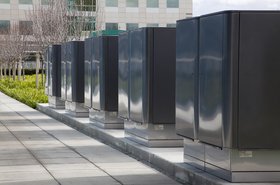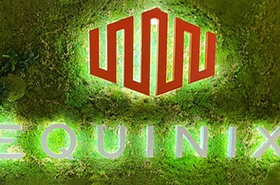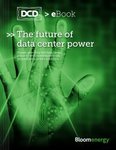Spearheaded by the proliferation of technologies like generative AI, 5G and augmented reality, data center demand across the globe has increased dramatically over the past decade. Unfortunately, so have the power problems that continue to dog facility operators.
According to the Uptime Institute’s 2022 Outage Analysis, 43 percent of outages classified as ‘significant’ are now related to power, with more than 60 percent of these failures – up substantially from 39 percent in 2019 – resulting in at least tens or hundreds of thousands of dollars of worth of total losses.
Traditionally, data centers have relied on the grid for easy access to power, but across the globe, aging infrastructure and the removal of “dirty” generation sources have combined to create a predicament for operators and tenants alike. The centralized grid took generations to build, but it was not designed to accommodate the exponential increase in demand. Compounding both the lack of generation and transmission is the fact that extreme weather incidents across many data center locations ensure a higher number of grid failures.
Even the diesel generators the sector has come to rely on in the event of a power failure, aren’t as efficient as they once were, requiring costly maintenance and testing on a regular basis to ensure they’re ready for action when needed.
As a result, forward-thinking operators are increasingly looking to dedicated onsite power generation to create a more reliable, predictable, and sustainable data center. Through technologies like fuel cells and solar paired with storage, onsite power can provide the 24/7 resilient operation data centers require while also providing independence from the uncertainties of the traditional grid.
To find out more, DCD spoke to Jeff Barber, VP of data centers at Bloom Energy, to discover how Bloom is approaching data center power demand in today's increasingly digitized, power-hungry world.
“Once upon a time, a 15-kilowatt rack was more than adequate for standard x86 architecture, storage, and switching. Today, with GPU workloads, generative AI and machine learning, that can be in excess of 50 to 100 kilowatts per rack,” says Barber.
Not only does this enormous increase drive up power densities at existing facilities, but it is making it increasingly challenging to scale renewable energy from the grid, creating roadblocks to the sustainability goals now widely adopted across the sector. With many operators, particularly hyperscalers, having pledged to run on 100 percent renewable energy by 2030, current realities make this very difficult to achieve when solely relying on the traditional grid.
In response, data center operators are now recognizing the need for more resilient, lower-carbon solutions to power their always-on mission-critical facilities. That said, in terms of sustainability, there is no silver bullet or one-size-fits-all solution for the power demands we’re experiencing today, as Barber explains.
"Currently, there is no purely green solution for 50 to 100 megawatts of power that is scalable, reliable, and sustainable. There are absolutely steps the industry can take today, we should and must take them. Deploying lower carbon solutions today pays massive dividends in the future. Forward-thinking customers are taking action now while the world waits for a utopia-like green hydrogen solution, which, in my opinion, is still five to 15 years out,” he says.
So, what can we do?
With its innovative onsite power products, Bloom Energy is helping drive the transition to greener, more reliable power. For example, Bloom's solid oxide fuel cell systems, like the Bloom Energy Server, convert fuel into electricity through an electrochemical reaction, without combustion, and therefore zero harmful pollutants.
Bloom’s fuel cells aren’t limited to traditional fuels. They operate seamlessly with biogas, hydrogen, or a blend of any of these. Bloom enables reliable, flexible, always-on power from an onsite source, enhancing sustainability, pricing predictability and resilience.
"Hundreds of customers around the globe are leveraging onsite fuel cell ‘microgrids’ both with and without a grid connection,” says Barber. “These are typically 25 to 30 percent cleaner than a standard utility, with much higher availability through redundancy and constant monitoring.”
This distributed generation approach also avoids the losses and variability of grid transmission and central power plants, resulting in significantly lower carbon output.
In addition to sustainability benefits, Bloom's fuel cell microgrids offer critical advantages for data center operators. The distributed redundant design ensures high-quality, reliable electricity.
Each fuel cell server provides UPS-grade power directly into the facility. With no single point of failure and 100% concurrent maintainability, outages are far less likely than with centralized utility feeds. The modular architecture also enables fast deployment and scaling. Bloom's new Series 10 guarantees at least 10MW of turnkey power shipped in just 50 days. This rapid time-to-operation is critical for data centers where utility connections are often quoted as multiple years out.
"We are in complete control of our manufacturing,” says Barber. “We have gigawatts of capacity based in the US: Fremont, California, and in Delaware. So, we are able to ship, deploy, and install in a matter of two months once the facility is ready.”
Finally, the flexible fuel cell approach easily integrates with higher-density racks and intermittent renewable power sources such as solar. As power needs escalate and generation evolves, Bloom Energy provides a stable bridge to the future of sustainable data center electricity.
Trust and the transition to sustainable power
Despite clients now expecting sustainable yet ultra-reliable electricity, systemic change takes time. As promising as new technologies appear, data centers – or anyone operating in a power-hungry, mission-critical environment for that matter – hesitate to adopt them until reliability, economics and scale are proven. True industry-wide collaboration is still limited.
The transition to a more sustainable yet ever-more-powerful data center ecosystem will depend on this spirit of openness and innovation. Technologies like Bloom Energy’s will certainly play a significant role in shaping the future of intelligent, responsive, and environmentally sound data center power. Barber believes that collective action will drive this transition.
“We are seeing more coalitions of data center competitors, called ‘coopetition,’ that are working together to educate governments and educate local utilities and others of just how much value the data center industry provides to our digital lives every day,” he says.
The future of data center power
The data center industry's power needs will continue to evolve over the coming years. While more sustainable generation is on the horizon, reliability remains paramount and the transition to fully green sources, such as solar and hydrogen, will be incremental. These renewable resources can be intermittent, so they must be combined with stable 24/7 power until storage and distribution challenges are resolved.
"From a Bloom product perspective, you will see higher densities (smaller footprints) in the same form factor, which is important. At Bloom Energy, we don't require you to throw out the previous generation to use the new generation," says Barber.
Meanwhile, software-defined power architectures will enable more dynamic distribution for flexibility and efficiency. This enables optimized power delivery at a granular, rack-level, or even partial rack shifts as demands change.
Adopting these new technologies will take education and collaboration between vendors, operators, and utilities. With the industry's traditionally conservative mindset, proof points and trust in reliability will be key. Bloom has been deploying fuel cells to mission-critical facilities for over a decade now. “This is not a ‘new’ technology,” says Barber. “It is proven and trusted for many years. Bloom brings the manufacturing scale, global support, and economics to the market, making onsite power generation the best viable solution with or without the centralized grid.”
While a completely renewable data center ecosystem may still be years away, incremental steps in that direction continue through new technologies. Bloom's fuel cell microgrids exemplify that progress by balancing sustainability with mission-critical reliability in the interim. Though the ideal all-green data center remains a work in progress, innovations like Bloom's are paving the way to that future.
For more information on the future of data center power, check out the eBook here.
More on Bloom Energy
-

AWS looks to deploy Bloom fuel cells at Oregon data centers as primary fuel source
Company seeking to use natural gas to power data centers
-

Nxtra to deploy Bloom Energy hydrogen fuel cells at data center in Karnataka
Company claims to be first data center in India to deploy fuel cells, initially using gas, and transitioning to hydrogen
-

Equinix opens co-innovation facility at DC15 data center, will test gear from Bloom Energy, ZutaCore, Virtual Power Systems, Natron, and others
A small testbed ahead of potentially wider rollouts

